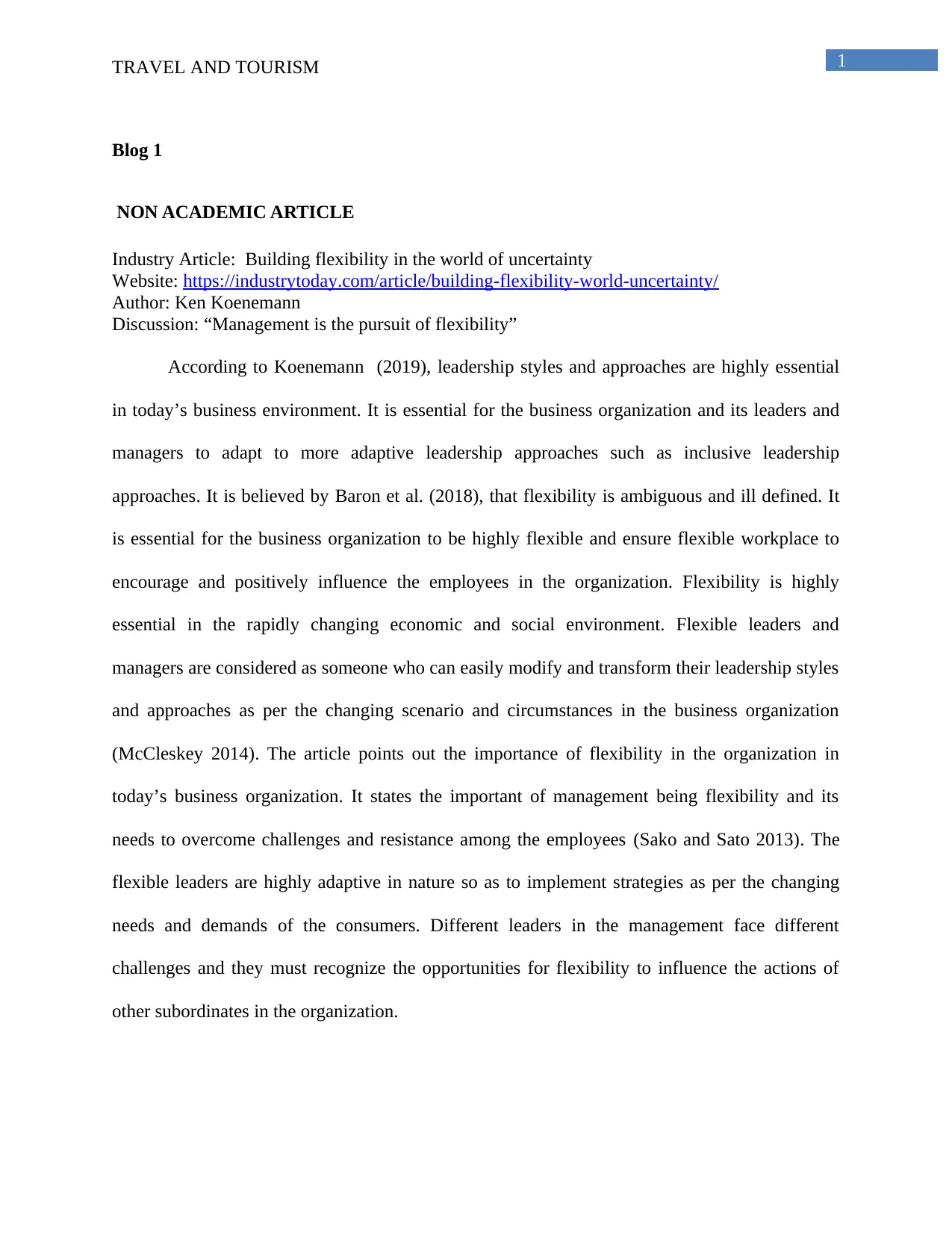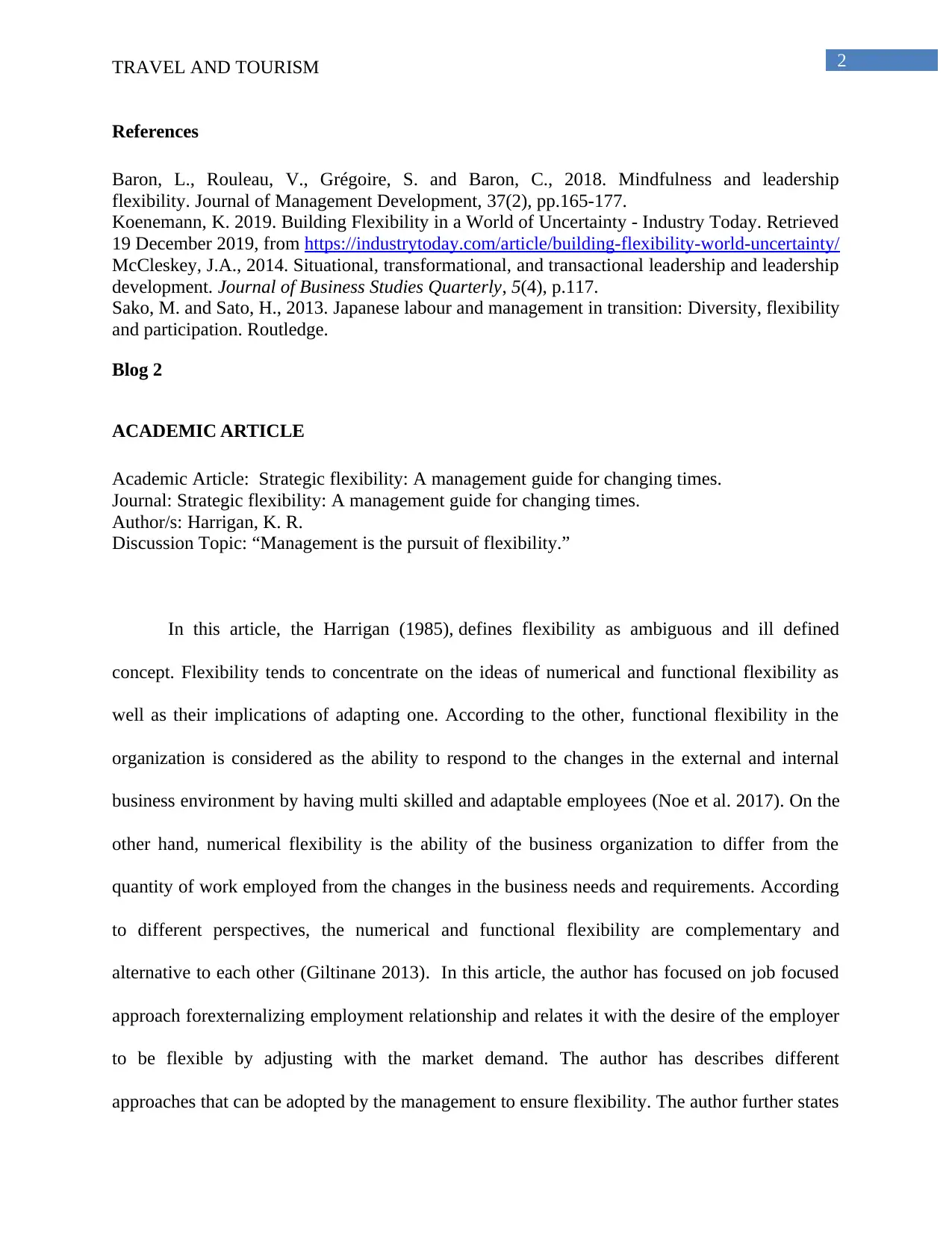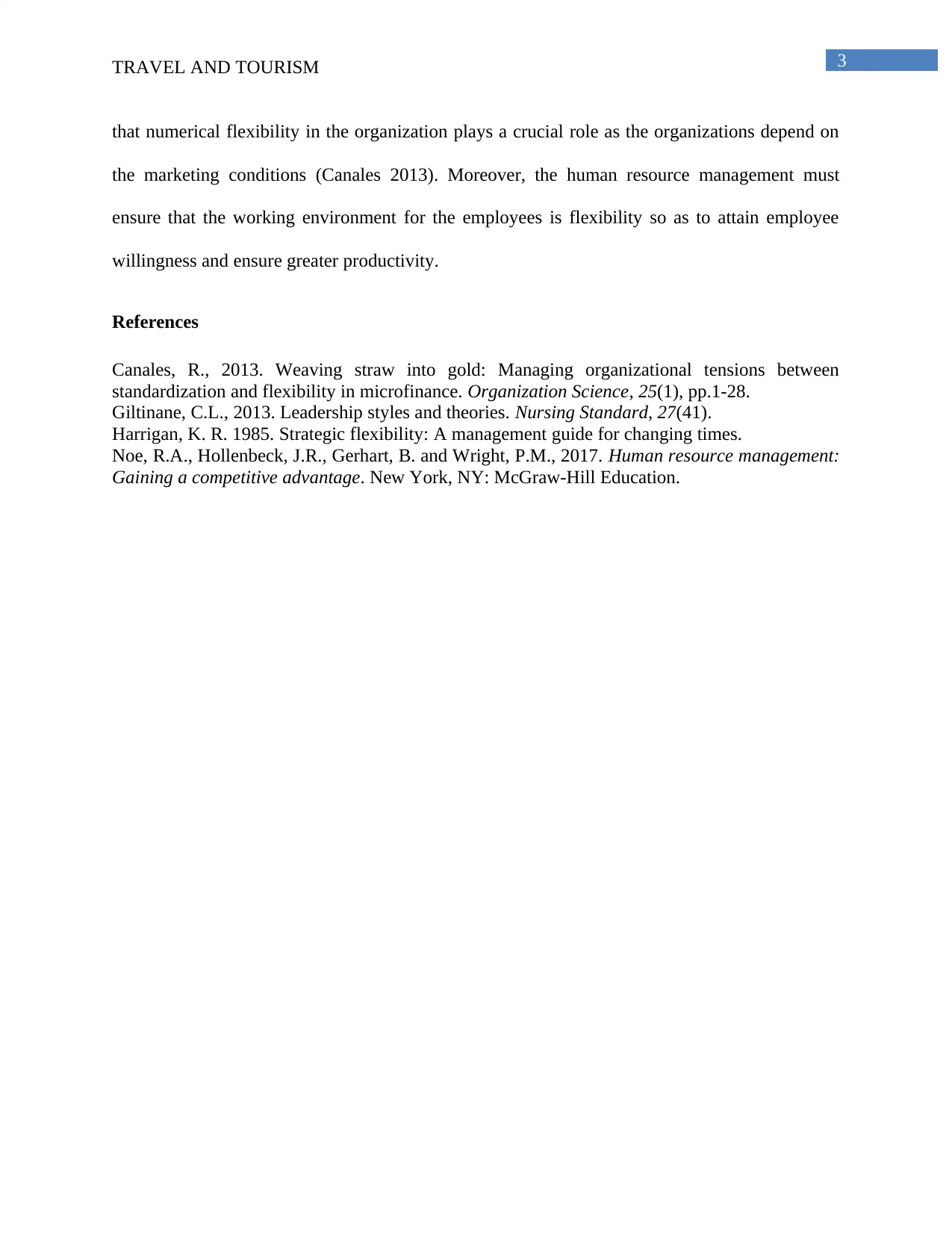University Name - MKT01907: Management Flexibility Blog Assignment
VerifiedAdded on 2022/09/07
|4
|796
|21
Homework Assignment
AI Summary
This assignment consists of two blog posts, each approximately 200 words, analyzing the concept of management flexibility within the context of the travel and tourism industry. The first blog post critically reviews a non-academic industry article, highlighting the importance of adaptive leadership approaches and flexibility in rapidly changing environments. The second blog post analyzes an academic article, defining flexibility and exploring its implications for organizational adaptability, including numerical and functional flexibility. Both posts connect the articles' themes to the assignment's core topic, 'Management is the pursuit of flexibility,' and relevant course materials, reflecting on personal and professional experiences to illustrate the practical application of these management concepts. The assignment aims to identify and describe management competencies for effective organizational performance, as outlined in the course objectives.
1 out of 4







![[object Object]](/_next/static/media/star-bottom.7253800d.svg)